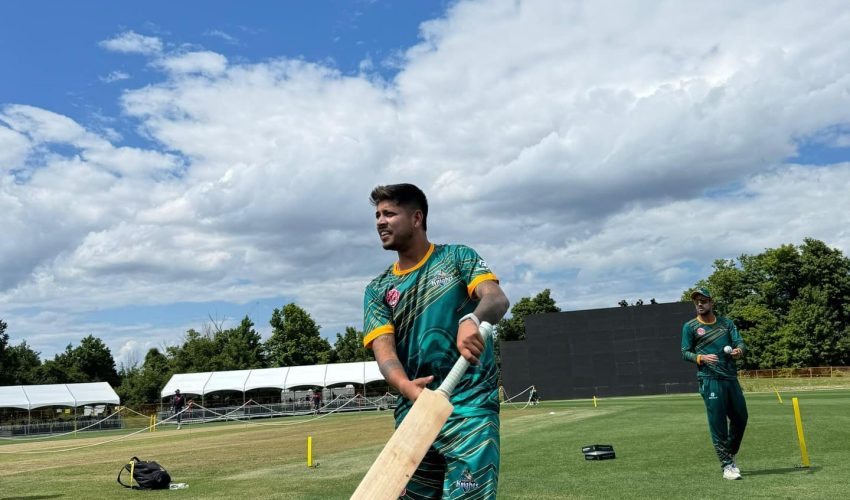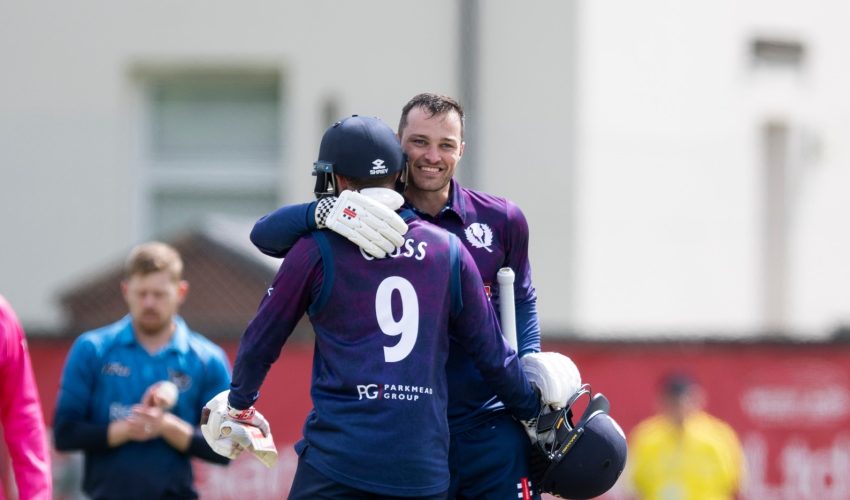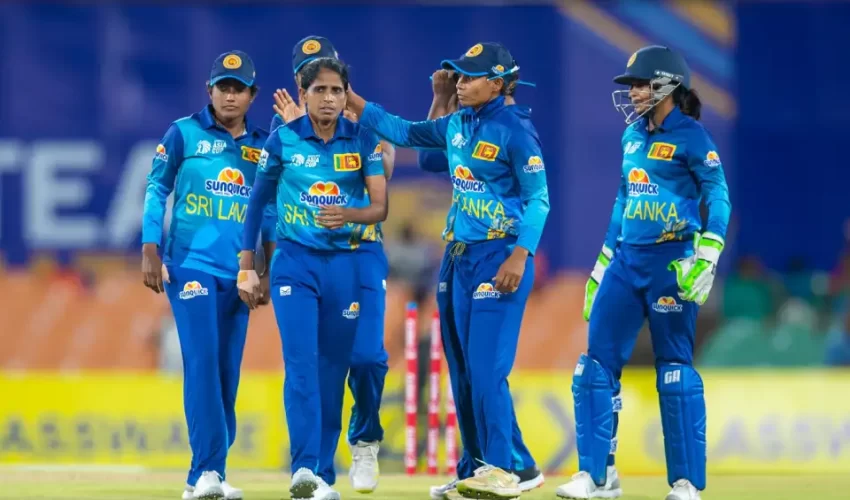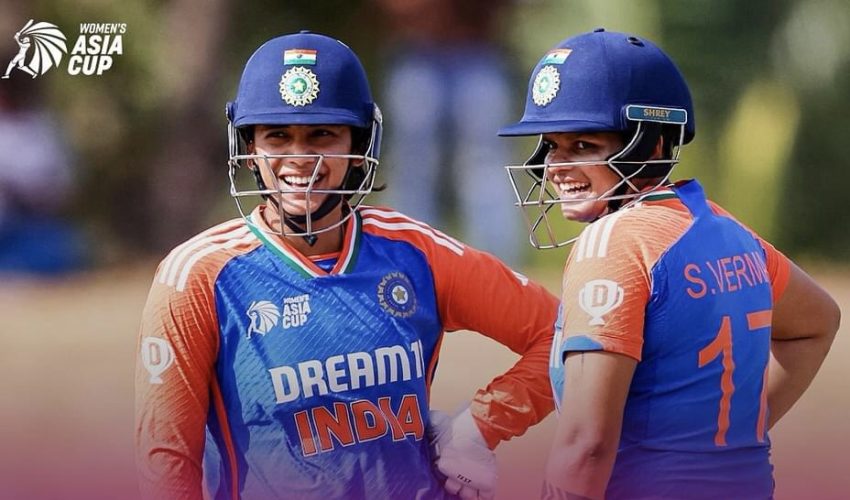Sports are stereotypically considered a masculine field and cricket takes it a step further by calling itself “The Gentleman’s Game”. (No wonder, women do not get to compete on equal turf!) The barriers faced by women cricketers is similar to those faced by women in society in general like damaging stereotypes, inadequate resources, lower wages and discriminatory policies.These discrimination coupled with CAN’s prejudiced attitude towards the women’s cricket has crippled the sports’ growth.
History
Women’s Cricket was first introduced to Asian non-test playing countries in 2007 through Asian Cricket Council(ACC) Women’s Championships. Prior to that, most Asian non-test playing nations including Nepal did not have a women’s team.
Nepalese team for 2007 ACC Championship was made up of athletes from other sports. For instance former Nepal captain Nary Thapa, ACC emerging player of the year 2007, Nepal Sports Journalist Forum(NSJF) Youth player of the year 2067 and first Nepalese woman to score a half century in international Cricket and century in domestic cricket, is in fact a popular badminton player. The other participating teams – China, Hong Kong, Thailand -shared similar stories. Nepal had easily outclassed all the teams then, except Bangladesh, and finished runners up in the tournament
Fast forward to 2016 – ICC is hosting Asia qualifier for Women’s World Cup 2017 in Hong Kong this October between Hong Kong, China, Thailand and Nepal with winner qualifying for global qualifier and Nepal is the least favorite to win. So, how did Nepal with a head start and outrageous support for Cricket fall behind likes of China, HK and Thailand where few people know and care about cricket?
The Gentleman’s game
Unlike men’s team, Nepalese women’s team doesn’t have a regular squad, coach, fitness trainer or a physiotherapist. I had talked Cricket Association of Nepal(CAN) members about this discrimination 2014. They replied that it was because the women’s side did not have the same prospect as men’s side in international area nor have the same physical needs as men to hire a permanent physiotherapist. The problem with this argument beside it being sexist is that it is totally false.

In 2010 Guangzhou Asian Games – Women’s Cricket Team was expected to win a medal, perhaps the only time in history, Nepal hoped for a medal in a team event in Asian games. Also while the men’s side is yet to play a top test side, the women’s team played full squad of Sri Lanka and Pakistan as early as 2012 in ACC Women’s T20. Add to that the women U-19 has not just won every single tournament, but every single international match they have played.
The truth is CAN maintains the ridiculously sexist view that women’s cricket is immensely inferior to that of men regardless of their prospects and achievements.
Prejudiced Payment
In 2011 CAN announced that it would pay a sum of Rs. 5000 monthly to each members of the national team. Most of us including, sadly, the members of women team had thought that it included them as well, but to their disappointment only men got paid. The players had spoken out against it then stating how they felt insulted but it changed nothing. Now, the men’s team has central contract ranging from Rs. 5000 – 35000 while the women cricketers get nothing.
The issues of equal pay in Tennis and US Soccer has sparked massive controversies this year. The people who defend higher rewards for men argue that men sports generates more revenue. But this argument doesn’t apply here as men’s cricket team in Nepal like women’s team does not generate much revenue, so the difference in their wages is merely reflection of sporting authority’s prejudiced view of women cricket. It is for the same reason the female cricketers were not even invited to join the ceremony announcing Nepal Telecom’s record NRs. 15.5 million sponsorship of men and women team.
Rampant Morbid Stereotypes
For long national women tournament would be 25 overs with 40 meter boundaries owing to lack of “stamina” and “capacity” of women cricketers. It is absurd that many women cricketers are convinced that this cliched view of their game is actually the reality.
In 2014 CAN finally agreed on extending the game to 40 overs. All doubts about stamina and capacity were answered that year as four centuries were scored in that tournament. This year the national selection tournament was once again cut to 20 over and limited to 6 teams (from 10) because of lack of time, players & coaches, among “other” things.
Low Participation
Women are underrepresented in cricket administration, coaching and decision making positions. CAN executive committee has only 1 female member. This has ensured the stereotypical attitude of the CAN towards the sport-women cricket is considered a lesser sport and it receives less attention and resources resulting in less tournaments, lower quality events and small participation. Also the kits and jerseys that are provided the female cricketers are often inferior to that of men. Although CAN’s first CEO was a woman, these discrimination were so ingrained with CAN she could do little to change anything and spent most of her tenure tending almost entirely to men’s cricket.
These problems have helped shape a negative attitude of society towards women cricket and it has been getting increasingly difficult for budding female players to convince their parents in taking up the sport.
More Indifference
It is not just a coincidence that countries that performed better on Gender Inequality Index (GII) – Thailand, China and Hong Kong had an acknowledged place for women sports and thus improved far more than Nepal. Nepal stands 145th in the GII while China and Thailand are placed 90th and 93rd position respectively. The GII rank is translated in the way women sports is treated in these nations. The fact that 10 years of women cricket history CAN has neither organized a international women tournament(over half a dozen men’s event have been held in the same period) nor arranged any foreign training tours for women side is evidence of CAN’s utter indifference towards women cricket.
While Nepal was ignoring women cricketers, Thailand, China, Hong Kong ensured proper training. Thailand women train alongside their male counterparts and have been touring India annually since 2012. As a result their women’s team won the 2013 ACC Women’s Championship, played 2 global qualifiers and are favorites to win upcoming qualifiers in Hong Kong.

How Nepal’s women cricket with head start and tremendous public support for the game fell behind to these traditionally weak cricketing countries is objective evidence of the profound negative impact of gender inequality on development. For a nation that takes pride in having women leading all three branches of the government, Nepal should be ashamed of how it has treated women cricket and cricketers.
Global Problem
This discrimination against women is not exclusive to Nepal. For instance Belinda Clark scored the first double century in ODI way back in 1997 but the credit of first ODI double hundred in cricket is always credited to Sachin Tendulkar. The cricket’s eldest club MCC did not accept female membership till 1999. More recently in the World T20 2016 in India, where the men’s and women’s matches ran parallel but there was massive gulf between the prize money for men and women. The successful West Indian men’s side got 1.6 million USD while the women side, winners of the same trophy was only afforded 100,000 USD.
Breaking the Pattern
The National Sports Council(NSC) responsible for managing cricket in absence of CAN, should immediately hire a full time coach and support staffs to groom the national side for the Regional World Cup Qualifiers. Respectful wages and yearlong training at par with the men’s side should follow to mainstream women cricket. Only then can skipper Rubina Chhetry, who took the first hat-trick in Nepalese cricket history in 2009(3 years before Shakti Gauchan) can influence youths as a role model just like her counterpart Paras Khadka, eventually encouraging more women and girls to take up the sport.
Sport has been globally considered as a tool to promote gender equality but it’s only going to be effective at that when there is equality within the sport. Ensuring fair opportunity though policy changes and adequate allocation of resources will help female cricketers to live their potential breaking multitude of stereotypes related to and responsible for discrimination.







